Australian Tropical Rainforest Plants - Online edition
Trophis scandens (Lour.) Hook. & Arn. subsp. scandens
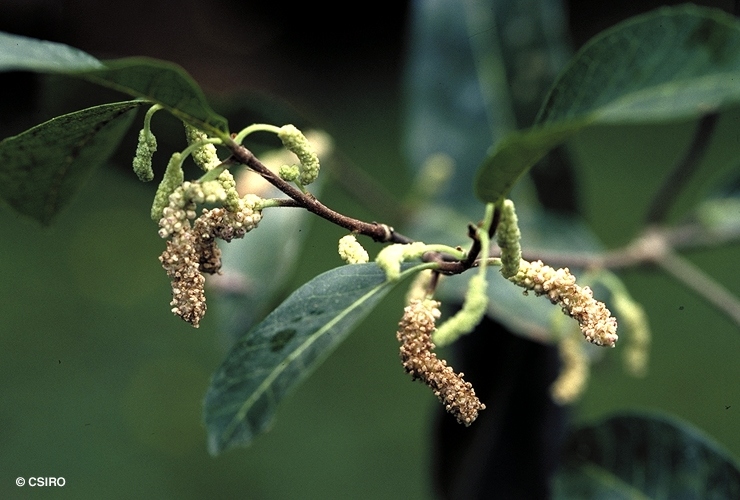
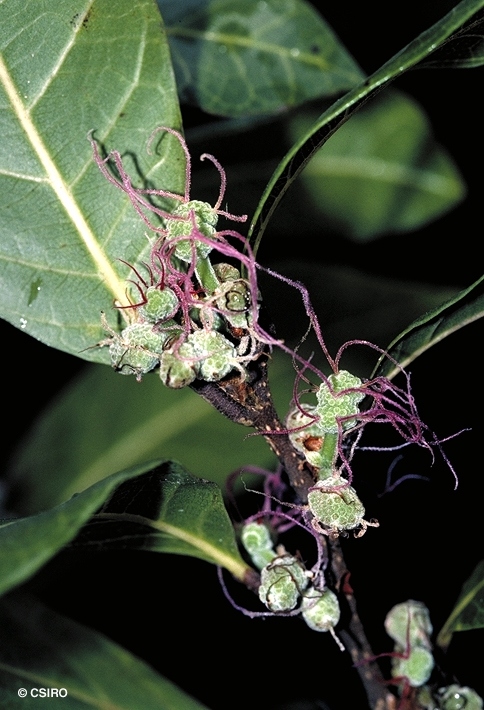

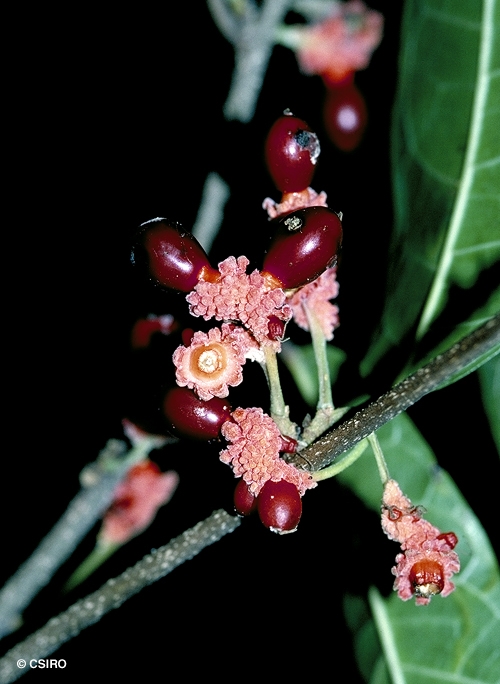

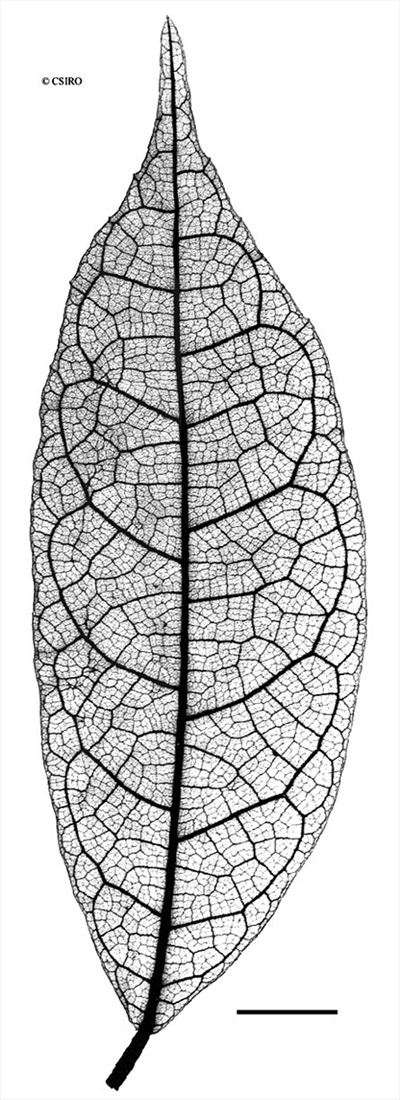
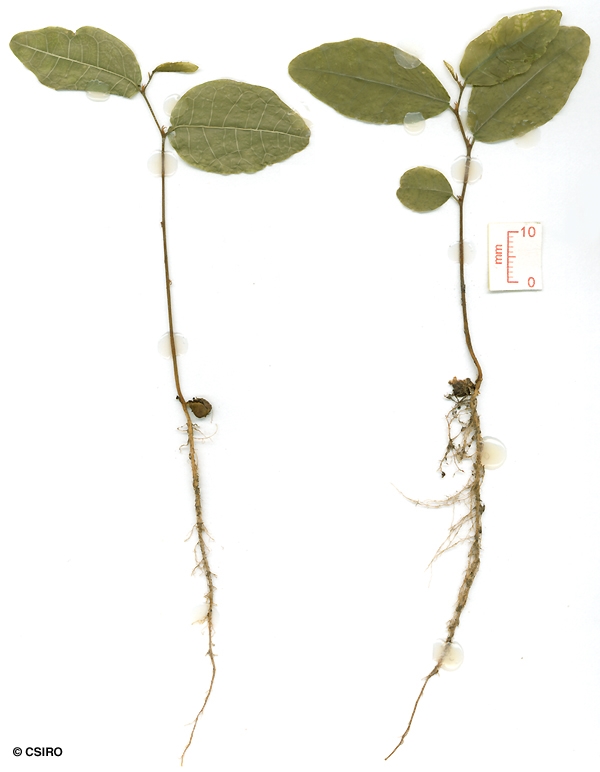

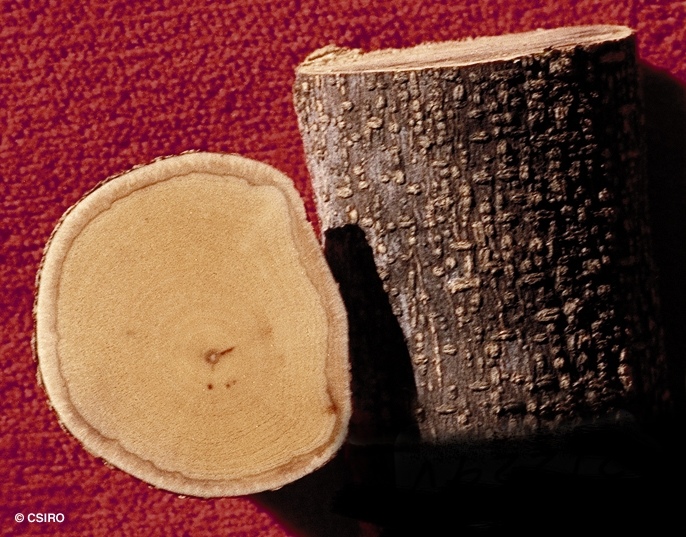
Hooker, W.J. & Arnott, G.A.W. (1837) Botany Beechey Voyage : 214.
Burney Vine; Burny Vine; Fire Vine; Firevine; Smarty Smarty; Vine, Burney; Vine, Fire; Ash, Crow; Crow Ash
Vine stem diameters to 6 cm recorded. Lenticels quite numerous, pale.
Twigs and petioles produce a milky exudate. Leaf blades about 4-11 x 1.5-5 cm, petioles about 0.2-1.2 cm long. Stipules about 2 mm long, sheathing the terminal bud. Stipular scars small and inconspicuous. Younger twigs marked by pale, elongated lenticels. Lower surface of the leaf blade scabrous. Lateral veins forming loops inside the blade margin.
Male flowers: Flowers in spikes about 20-30 mm long. Flowers globose, about 1-1.5 mm diam. Tepals about 1.5 x 1 mm, outer surface densely clothed in hairs. Anthers about 1.2 x 1.2 mm, filaments about 3.5 mm long. Female flowers: Flowers borne in globular heads about 4 mm diam. Heads solitary or in racemes. Individual flowers about 1-1.2 x 1 mm. Usually about 2-4 fertile flowers per head. Perianth urn-shaped, completely enclosing the ovary, only the stigmas protruding at the apex. Style short, stigmas about 5-7 mm long.
Receptacle orange-red, tuberculate, about 10-15 mm long with 1-3 fruits attached. Each fruit about 9 mm long, ellipsoid, style persistent at the apex. Seeds about 7 mm long, one cotyledon much longer than the other and completely enveloping the smaller one. Radicle about 2 mm long.
One or two cataphylls produced before the first pair of true leaves. First pair of true leaves ovate, about 20-30 x 12-18 mm, margins crenate or lobed, petioles about 1-2 mm long. Stipules narrowly triangular or filiform, about 2 mm long. At the tenth leaf stage: leaf blade ovate, about 8-9 x 4-5 cm, apex acute to acuminate, base auriculate, petiole about 4 mm long. Stipules about 2 mm long, sheathing the terminal bud. Lateral veins forming loops inside the blade margin. Seed germination time 17 to 28 days.
Food plant for the larval stages of the Two-brand Crow and Eastern Brown Crow Butterflies. Common & Waterhouse (1981).





